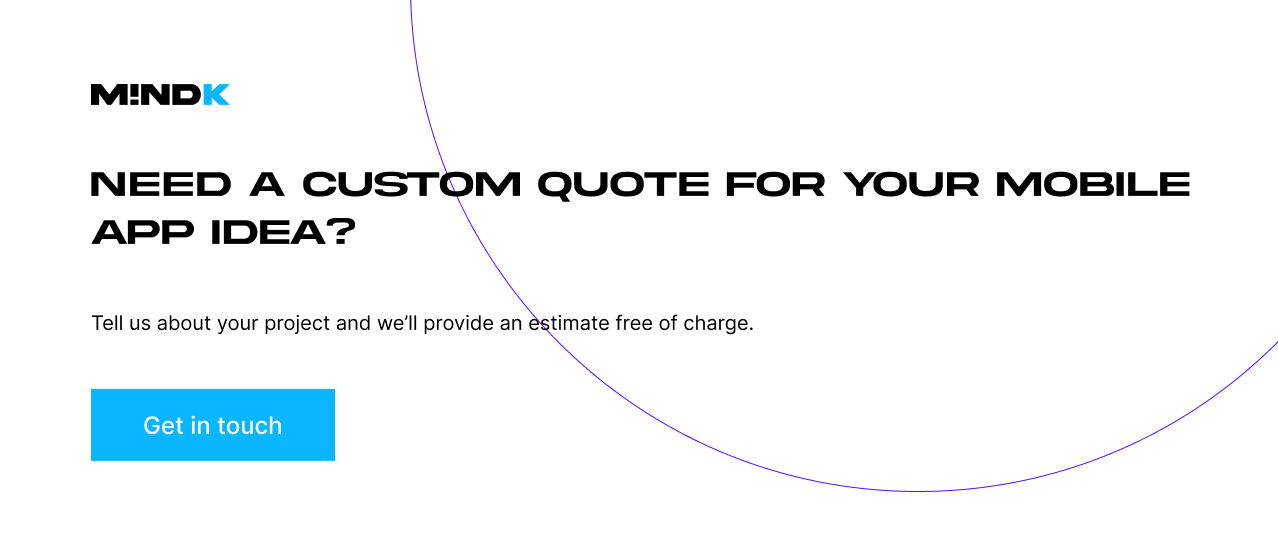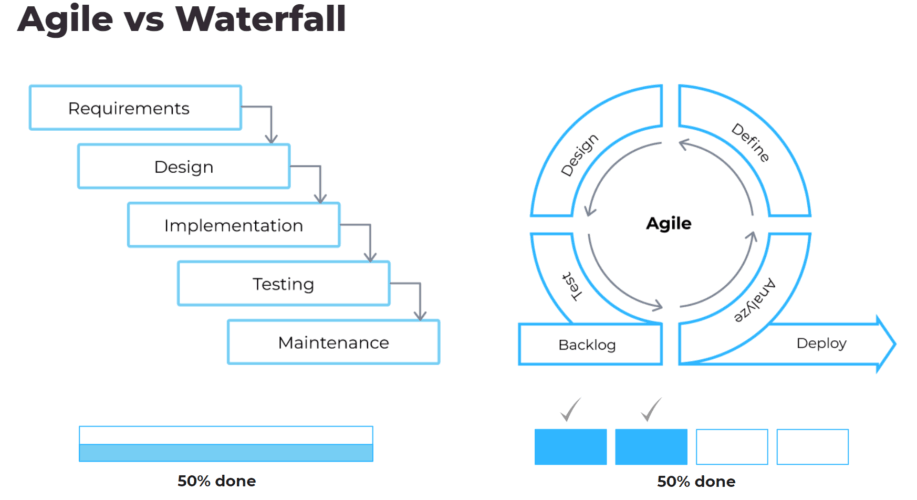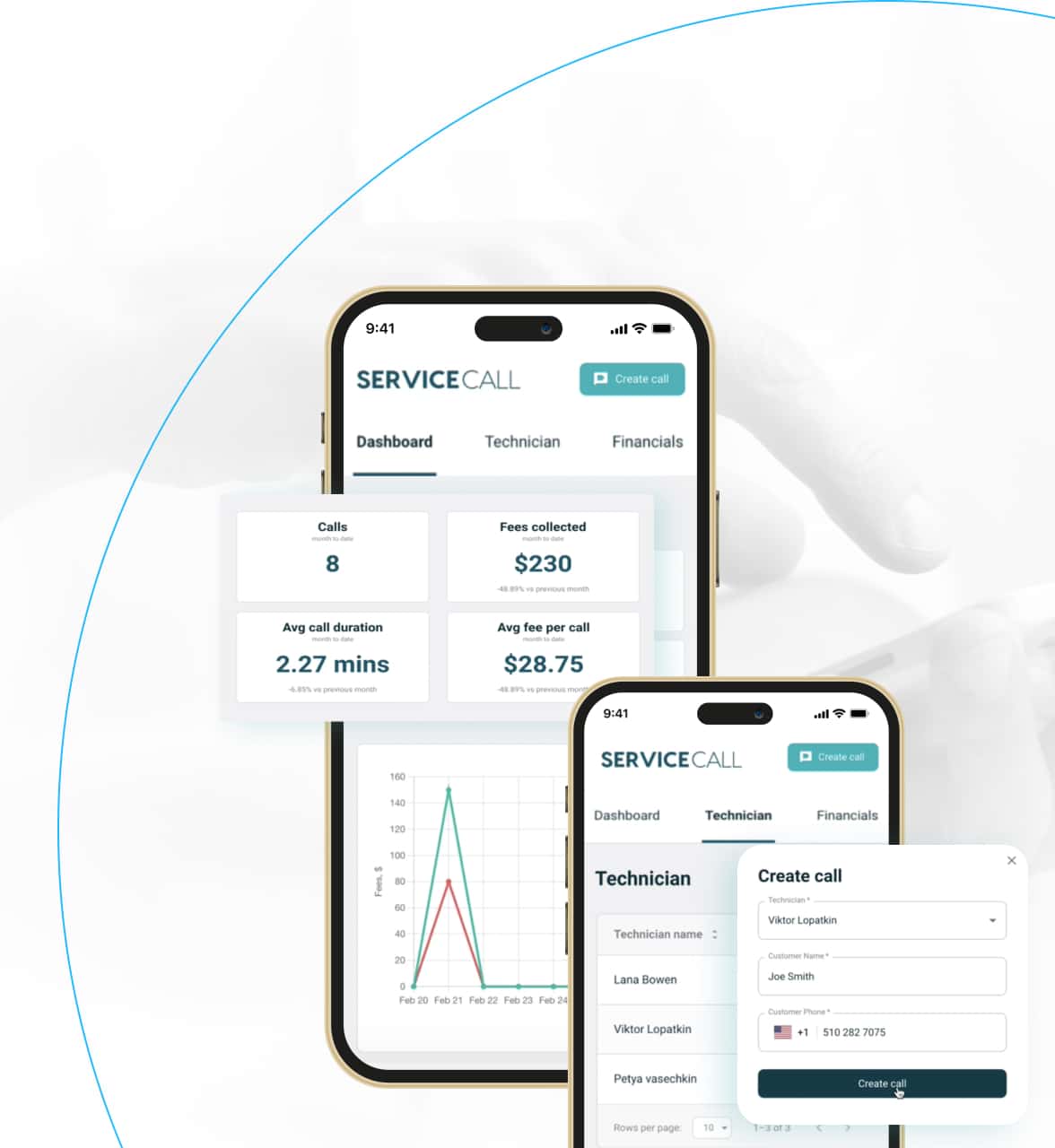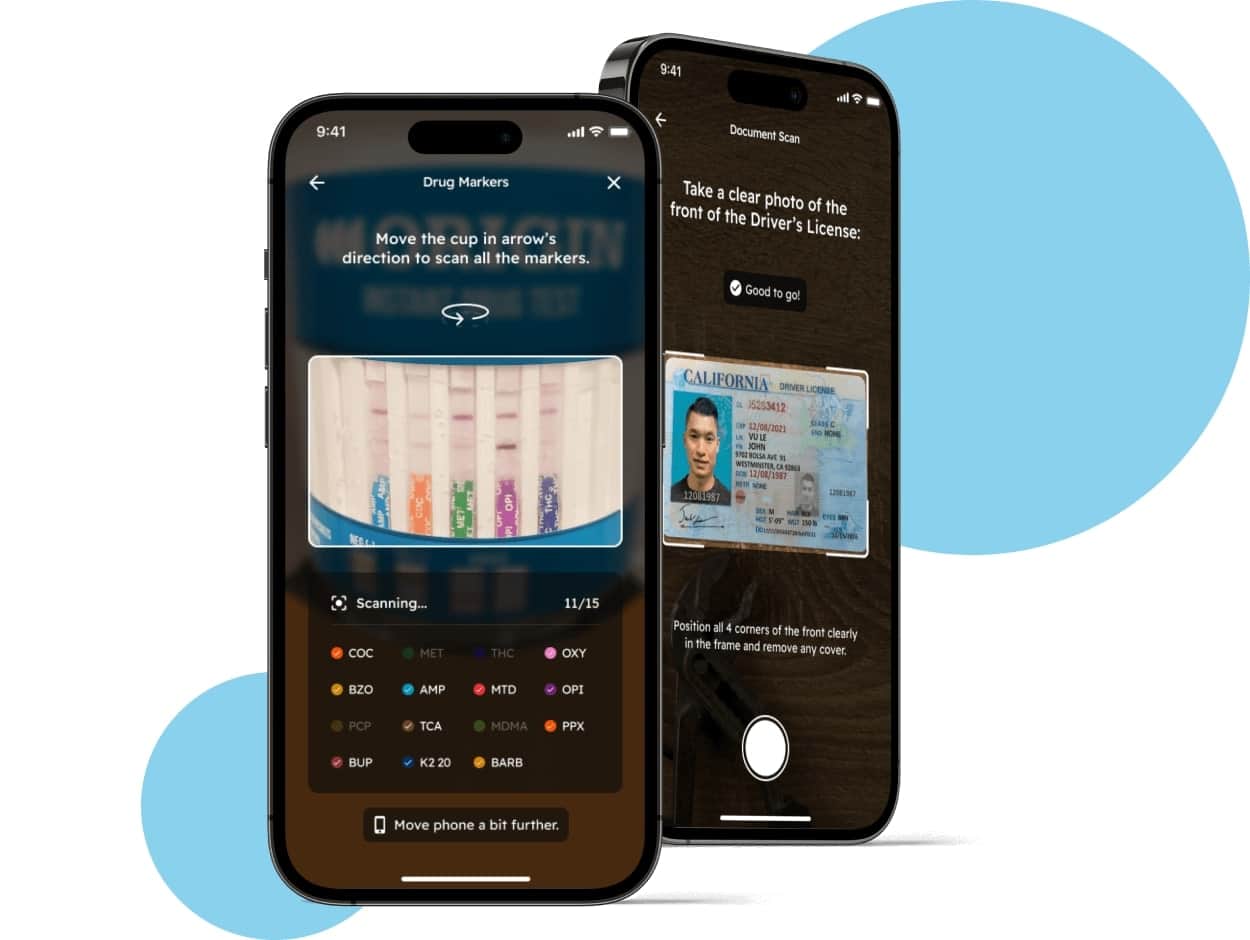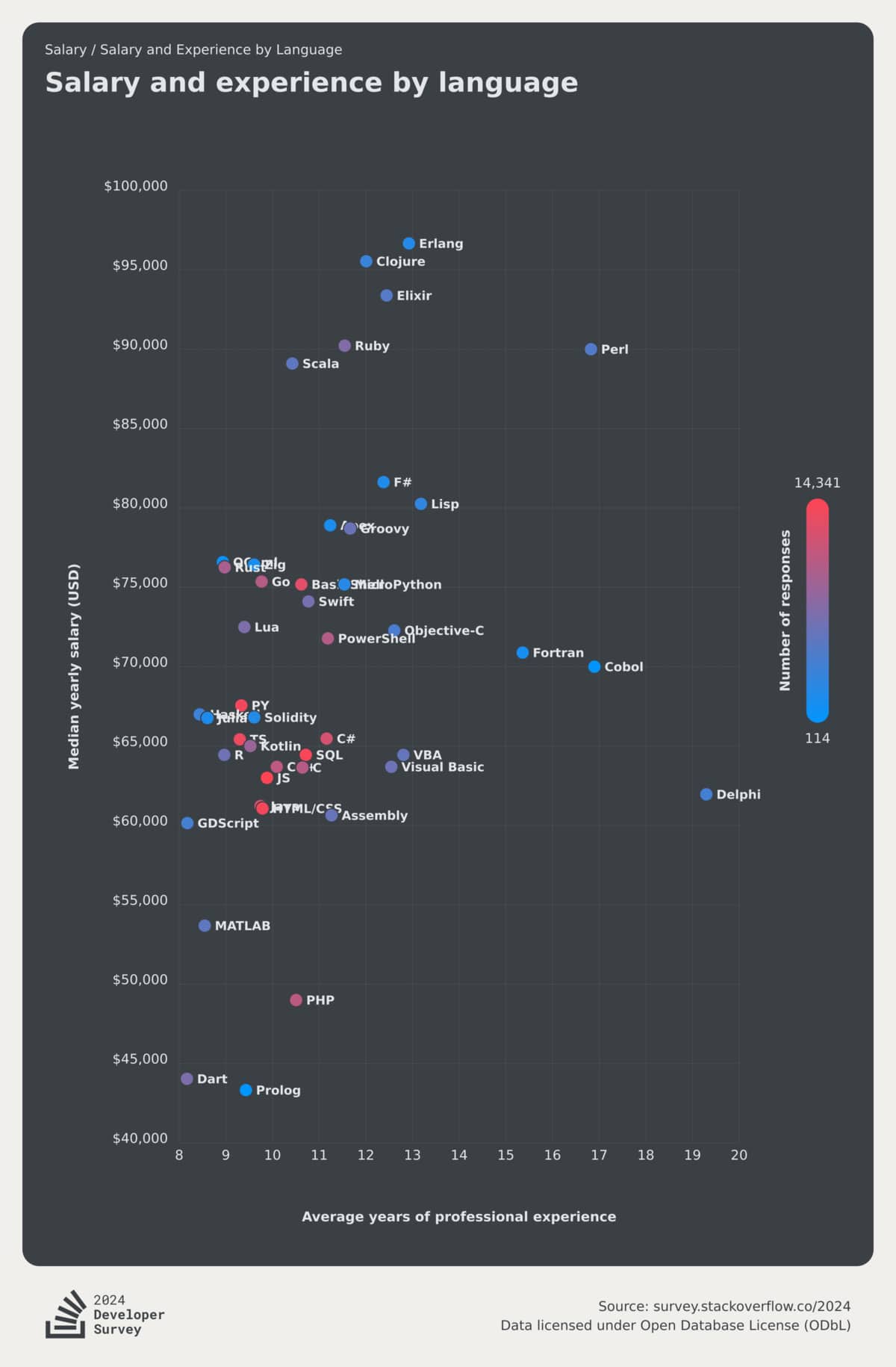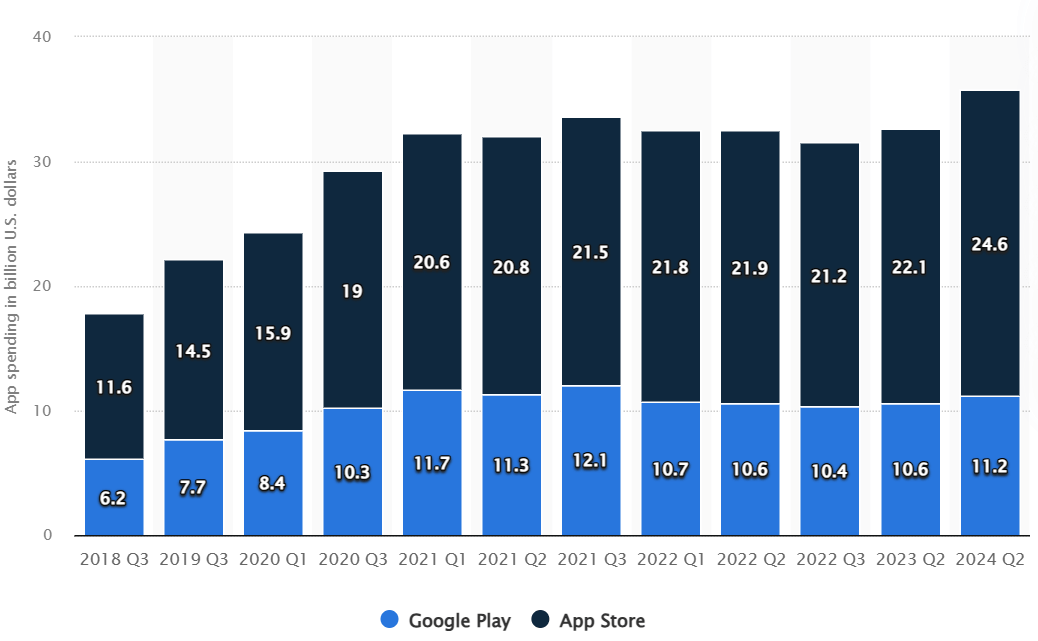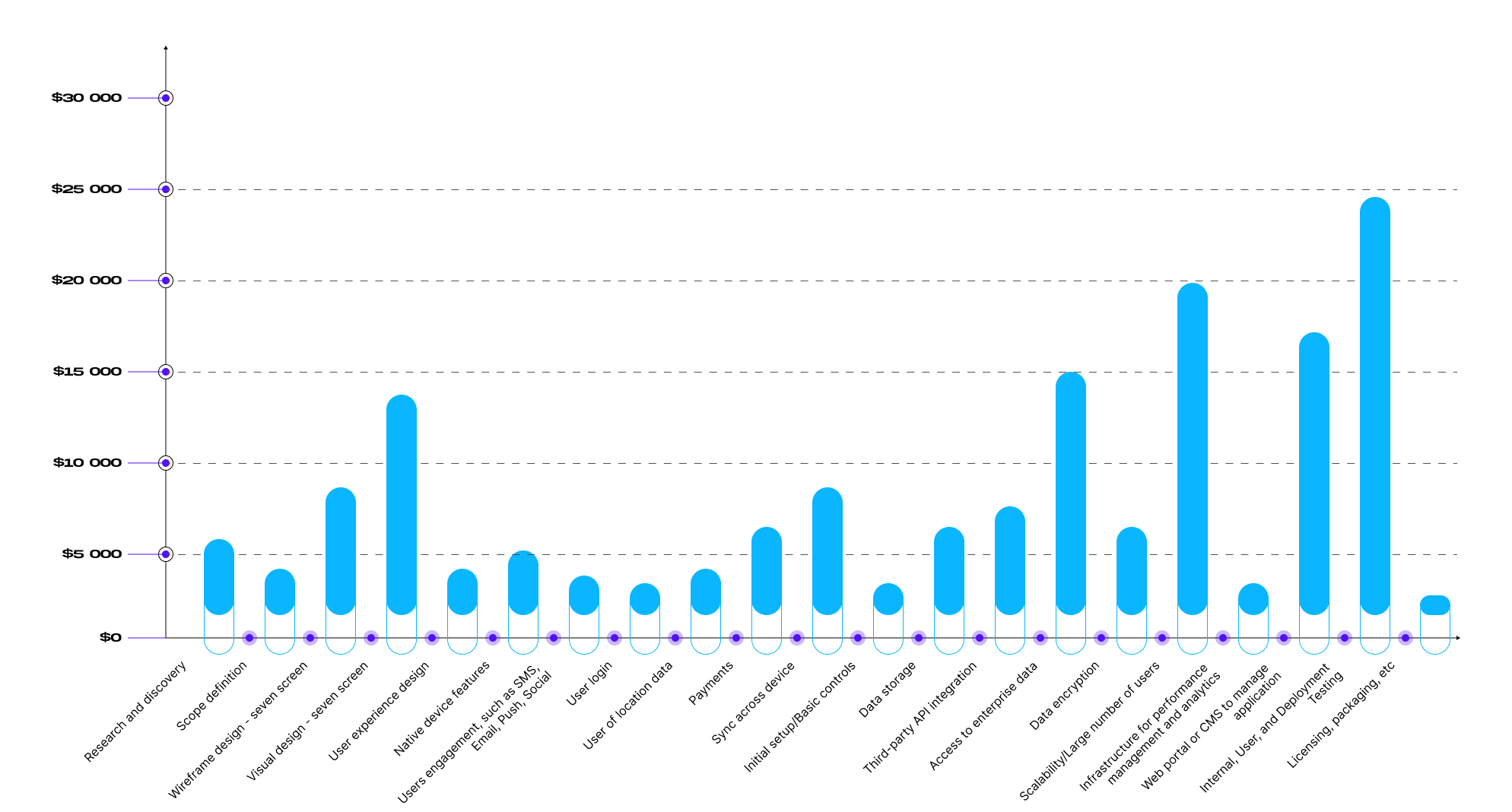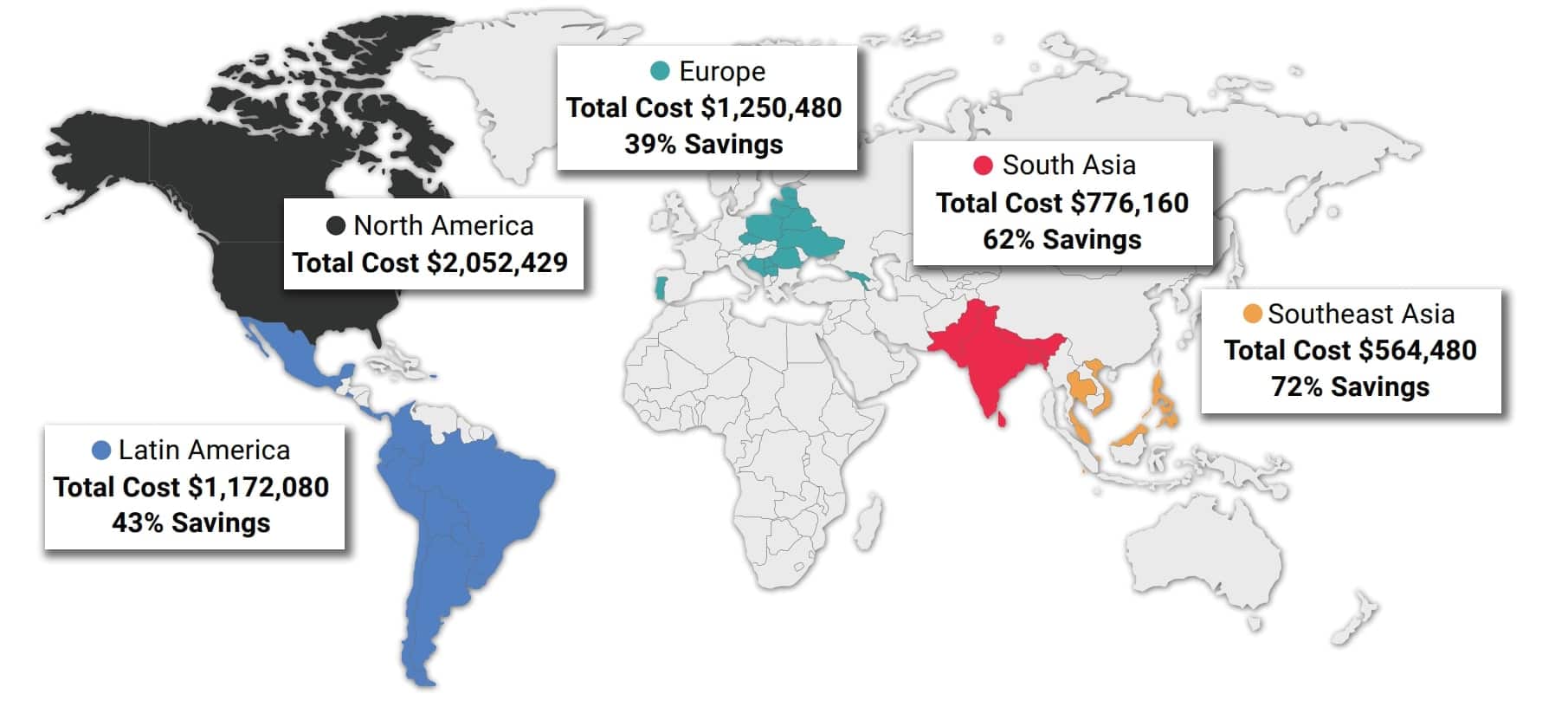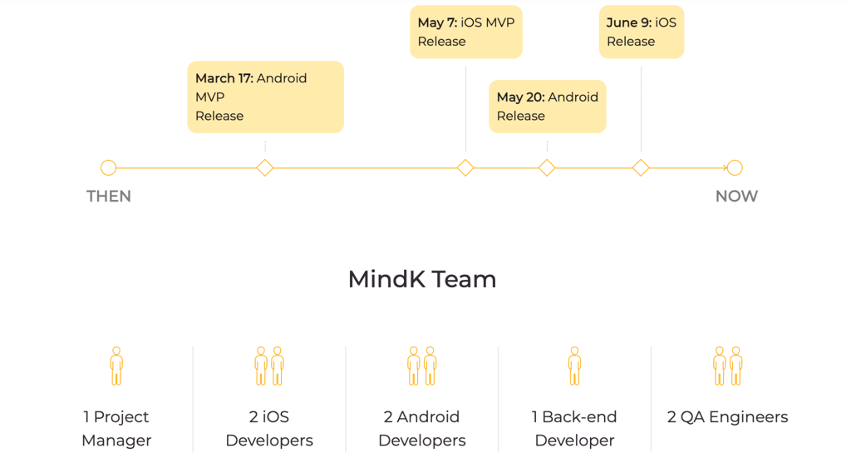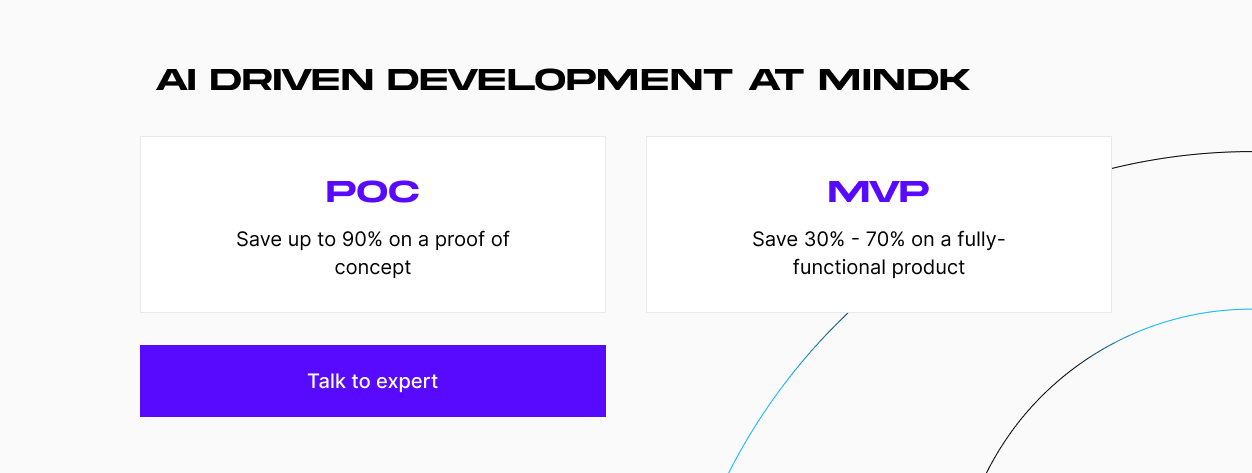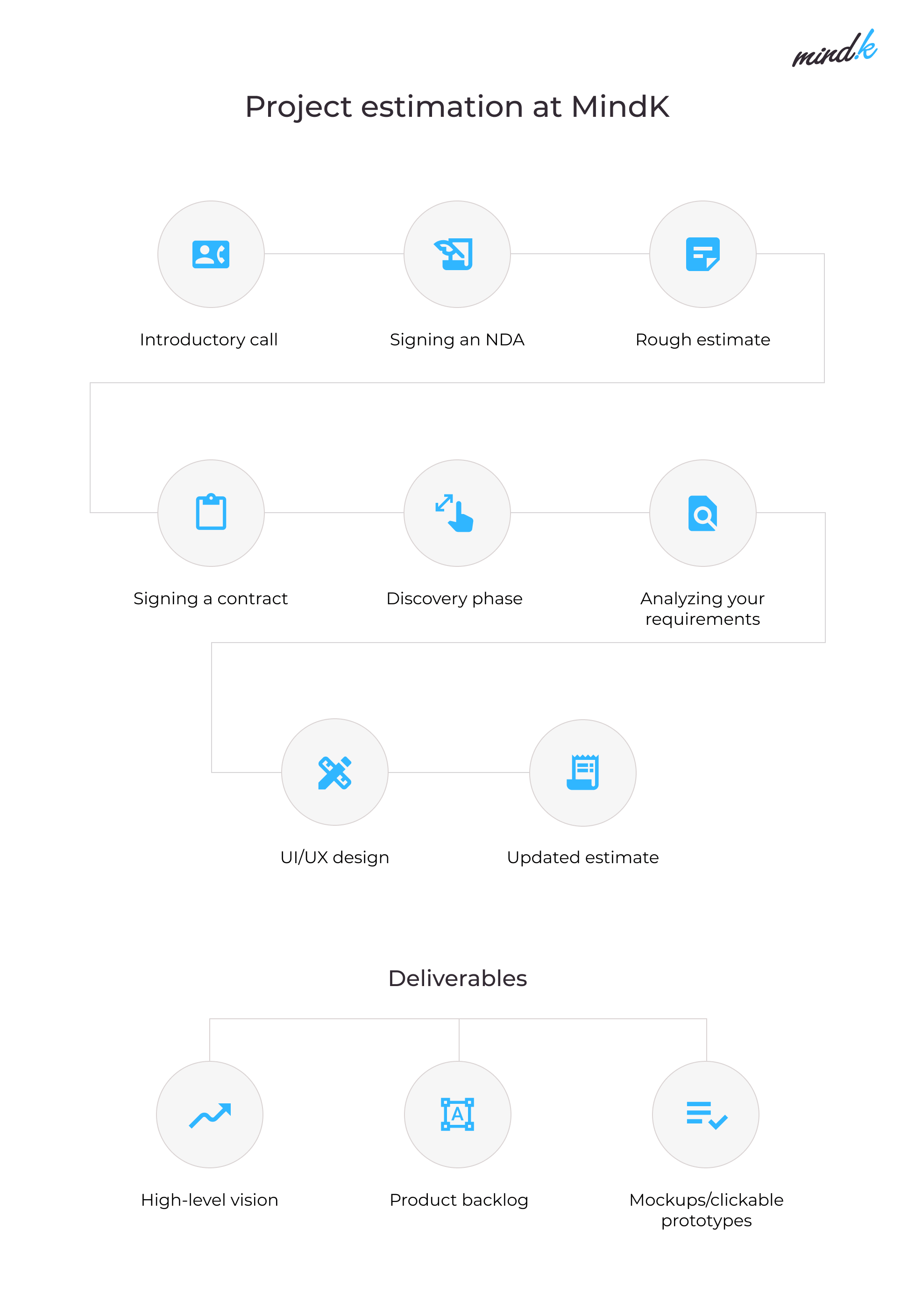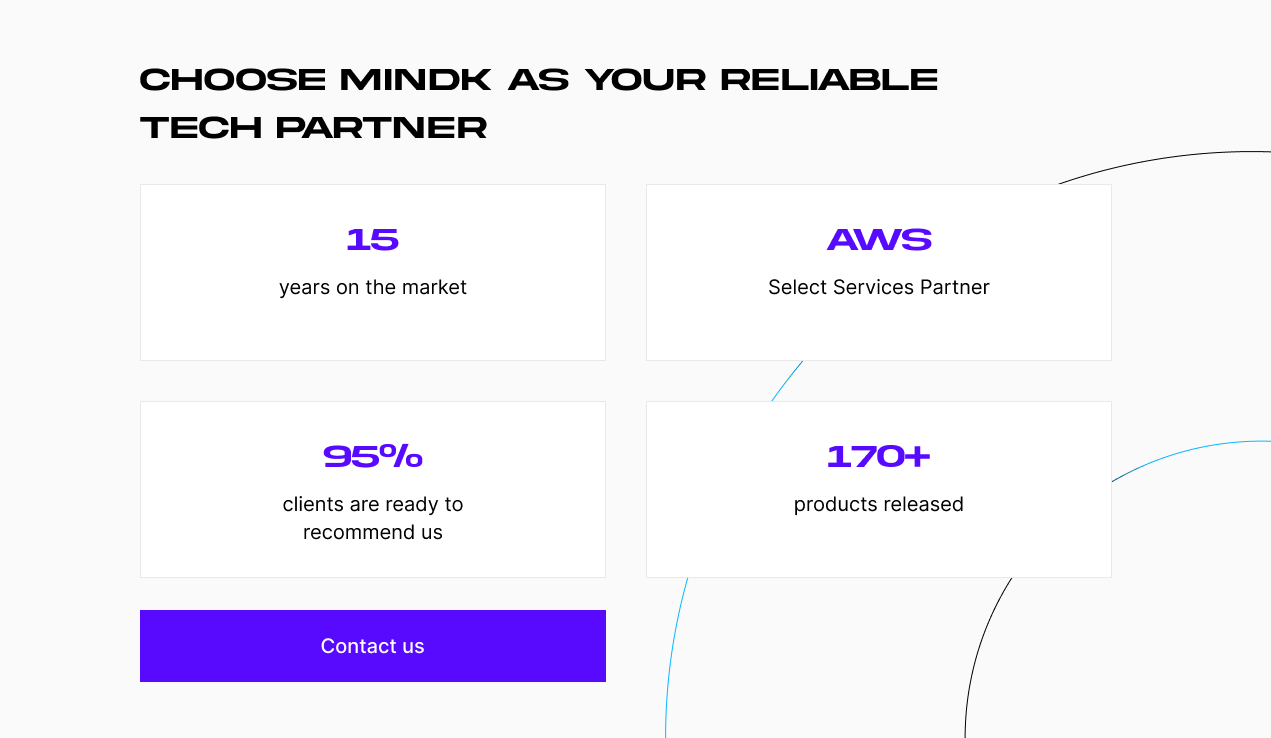“How much does it cost to build an app?” is the most popular question we hear at MindK from people interested in mobile development services. It’s a simple question that requires a complex answer. Business leaders need to know exactly where their money is being spent.
So, what are the expenses you might incur in the development process? How much does it cost to maintain an app after the release? And does a higher price always equal better quality?
This article will answer these questions to help you figure out how much time, money, and effort it takes to get your application up and running.
Table of contents:
- How hard is it to make an app?
- What are the main factors that influence app cost?
- How much does it cost to build an app of various types?
- Android and iOS app development cost
- The cost of various features
- The cost of a development team
- How do engagement models affect the costs?
- How much does it cost to maintain an app?
- How to reduce mobile app development cost
How hard is it to make an app [development process explained]
Nobody wants to buy a pig in a poke. Before you pay for any service, you should know what work will be done.
Mobile app development is not only about coding. The process consists of many tasks carried out by business analysts, developers, QA and DevOps engineers, UI/UX designers, and project managers.
Here’s what a typical app development cycle looks like:
- Requirements gathering and analysis. A business analyst defines project goals and the needs of end-users. Together with technical specialists, they create a Software Requirements Specification, Architectural Design Specification, Functional Requirements Document, or a backlog. This step lays the foundation for all development activities and validates the concept.
- Design. This stage includes mobile interface design, user experience design, interaction design, app icon design, and much more. The designer provides a client with wireframes, mockups, and so on. If required, a client can present a clickable prototype or an AI prototype to investors or early adopters for market validation.
- Development. A team of developers converts a design into a complete software system. It includes acquiring and installing a systems environment, making database architecture, developing internal API, adding third-party integrations, and running unit tests.
- Integration and testing. The team brings all the pieces together in a testing environment. The goal is to ensure that your app conforms to the requirements specified in the project documentation. This stage includes various types of testing, including UI testing, integration testing, cross-browser testing, and user acceptance testing.
- Launch. Engineers put the app into production. They resolve problems defined in the previous stages, test the app under various loads, publish it to the App Store or Google Play, and continue with support by the development team.
Now you know the process to expect from your team and can see where the money is going. The next rule for app development pricing is quite straightforward—the more time engineers spend building your app, the more expensive it gets. This leads to a simple calculation of the mobile app development cost:
App Cost = Development Time * Hourly Rate
As you likely have no estimate for the project now, let’s get a more nuanced picture of what impacts the final price of your app.
What are the main factors that influence app cost?
Five key factors influence custom mobile app development pricing:
- Type of app.
- Platform (Android, iOS, cross-platform).
- Technical complexity of your features and infrastructure.
- App development team.
- Engagement model (in mobile app development outsourcing).
Sure, other details impact the app development costs as well. But as the five factors mentioned are the most crucial ones, let’s discuss them in more detail.
How much does it cost to build an app of various types?
If you’re going to reach out to a software company, you should already have a coherent idea of the target audience, hence, the approximate functionality of your future app. This will bring you to the first step in the app’s estimating process.
It goes without saying that there are simple apps, medium-complexity apps, and complex apps on the market. You can easily find this classification on the web. It describes:
- Simple apps involve simple UX/UI elements and features, a limited number of screens, and no data storage.
- Medium-complexity apps have more advanced business logic, custom UI elements, and third-party integrations.
- Complex apps include innovative features with advanced business logic, a fully custom UI, complicated architecture, multiple integrations, and high security and compliance demands.
Speed and agility are paramount for any business. Building a complex app from scratch is a rare case nowadays. Most companies opt for the Agile software development methodology that presupposes an iterative approach. This means building products where the whole process is broken into smaller parts, thus delivering the functionality step by step.
Here at MindK, most of the projects we develop follow the Agile methodology. In view of this, we suggest three main types of mobile apps that are in demand today:
Proof of concept (PoC) development cost
Cost: $20 000 – $25 000
Timeline: 2 – 5 weeks
A proof of concept is the very basic variant of the future application. It helps evaluate a mobile app idea and tests it to see if it works. You can analyze the app’s feasibility, possible design, features, and go-to-market strategy. It also reveals potential barriers to the product’s development and acceptance by users.
A PoC includes simplistic functionality and design to check whether it is possible to build such an app.
This is exactly what we did for Melody, a music search engine for musicians, film and video producers, DJs, and multimedia designers. MindK developed a quick Progressive Web Application (PWA) that performs well on mobile devices to test the app’s viability. The concept was highly praised by the target users and allowed the client to raise funds for building a fully functional app.
Many founders now use no-code/low-code app builders or experiment with AI to decrease the cost to develop an app and time to market.
We’ll cover these methods in the next section.
MVP app development cost
Cost: $75 000 – $100 000
Timeline: 2 – 3 months
The Minimum Viable Product (MVP) concept is quite simple. It’s the basic version of a new application possessing enough features to satisfy customers and collect maximum feedback.
- Minimum: a basic set of features and capabilities which are…
- Viable: provide value to the customers, so that they are ready to pay money and a …
- Product: ready to use today.
MVP is the early version of the app with a simple but functional UI. It contains a set of core features that make it viable and possible to launch as soon as possible. MVP tests your assumptions and allows for feedback from real users.
At MindK, we believe that MVP is one of the best ways to start a software product.
One of our recent clients wanted to develop an app for electricians and other technical specialists. However, building all the necessary features would require up to $200,000 and six months of development time. We suggested building an MVP with core features and integrations with Stripe, Twilio, and Daily.co SDK.
To save costs, our Solution Architect used a proprietary AI framework for most tasks on the project – from UI/UX design to database architecture and API integration. The project lasted ~2 months with just one engineer on the team. This saved our client $160,000 compared to a traditional in-house team.
[Explore a detailed case study]
Fully-functional app development cost
Cost: 100k+
Timeline: 3+ months
A fully functional app is a more complex variant of the application and requires more time and effort to develop. Such apps often include complex features with advanced business logic and a fully custom UI. They also require complicated service-based architecture, multiple API integrations, and the need to meet high security and compliance demands.
HIPAA compliance has been one of the most expensive components of an AI-powered app for rapid medical testing. At first, we developed a relatively inexpensive PWA with basic security and AI image recognition. Its admin panel caught the attention of the client’s partners. To allow shared usage, we reengineered the app into a multi-tenant SaaS application and implemented Terraform-based compliance.
The app now includes 370+ healthcare services and has been in development for the past 2 years.
Android and iOS app development cost
Another factor that affects the price is the platform you choose. For mobile apps, these platforms are classified into categories like:
- Native apps are designed using the unique rules of the targeted operating system, such as Android or iOS.
- Hybrid apps behave like a web application but can be installed on the phone.
- Progressive web apps (PWA) simulate the behavior of native mobile apps and can be accessed from the browser.
- Native cross-platform apps use technologies like React Native to provide a native-like user experience while reusing up to 90% of code between iOS and Android. Pinterest, Skype, and Airbnb are just a few examples of successful React Native apps.
Hybrid, cross-platform, and progressive apps require fewer development resources to cover a bigger audience. They are usually more cost-effective, especially if you don’t rely on a certain platform’s native functions.
When it comes to native development, is there a cost difference between iOS and Android? No, usually not. Sometimes, iOS app development price ends up being higher. Other times, Android takes the edge.
According to the StackOverflow developer 2024 survey, Glassdoor, and ZipRecruiter, engineer salaries are pretty similar for iOS and Android if you account for the experience.
Android developer annual salary:
- $65,000 for Kotlin (Global)
- $127,151 for for Kotlin (USA)
- $61,222 for Java (Global)
- $117,931 for Java (USA)
iOS developer annual salary:
- $74,100 for Swift (Global)
- $100,265 for Swift (USA)
- $72,284 for Objective-C (Global)
- $123,138 for Objective-C (USA)
Cross-platform developer annual salary:
- $63,000 for JavaScript (Global)
- $129,348 for React Native (USA)
- $98,514 for Flutter (USA)
- $109,905 for PhoneGap cross-platform development (USA)
When choosing the best platform for your app, the target audience matters. Android, for example, has a wider market penetration and reach, particularly in emerging markets. However, users spend less in the Google Play store than in the App Store ( $11.2 billion vs $24.6 billion in Q2 2024).
The cost of various features
App development price is shaped by how long it takes engineers to implement each of the features.
Clutch.com, an independent review platform, once published comprehensive research about the cost to create an app. It provides insight into the relative complexity of various features.
For example, basic features like login and subscription can take 20 hours to develop. Meanwhile, a payment system integration or visual analytics may cost 150 hours worth of an engineer’s salary. Integrations are another huge variable, both in terms of complexity and the number of APIs.
The takeaway is that before you invest resources in a feature, it’s important to review its necessity and feasibility.
The cost of an outsourced development team
There are many companies that claim to be a top mobile development company. Few are able to walk the walk. An unusually low estimate is a huge red flag. However, there’s no guarantee that going with an expensive company will produce a top-tier app. So, which factors truly form a company’s pricing?
- Location.
- Company size.
- Level of experience.
Location
The level of infrastructure and economy of the country is one of the most essential cost-influencing factors. From the viewpoint of average monthly rates charged by app development companies, observe the following picture:
- North America/Western Europe: $100–$200/hour; high quality but expensive.
- Eastern Europe: $30–$70/hour; cost-effective with excellent talent.
- Asia (India, China, Philippines): $15–$50/hour; cost-efficient but quality varies.
- Latin America: $30–$60/hour; rising as a nearshore destination.
Keep in mind that a team is not a developers-only club. Depending on the project needs, you may also need a UI/UX Designer, Business Analyst, Project Manager, QA Engineer, or DevOps engineer. Their rates are also highly dependent on the region.
For example, for our project Juvo, a native app for local communities in Norway, our project team counted eight people, including the Project Manager, iOS and Android developers, Back-end, and QA engineers.
[Explore a detailed interview with our client Juvo]
Company size
Some roles become more specialized as the team and number of projects grow, and some become redundant. One designer becomes a team of designers plus a team of managers to lead and administer them.
Some of the largest software development firms, the “big boys” if you will, won’t give you the time of day if your budget is not at least $500,000. That’s no surprise because they must spend 50-65% of that cost on technical personnel, 15-20% on administrative expenses, 10-15% on sales and marketing, and 10-15% is left for profit.
In some cases, as the headcount grows, companies start to recruit more administrative personnel and tech guys straight out of college – so the net productive output per person shrinks. Our own approach at MindK, for example, is focused on having a smaller team of the very best people in the industry versus simply pushing up our headcount.
Level of experience
This is the thing you can’t go cheap with. What separates OK from great can be seen in the quality of the work. As a baseline, view the companies’ portfolios. Check out apps they created. Reviews on platforms like Clutch and DesignRush will speak directly about their quality of work.
How do engagement models affect the costs?
There are three most common types of engagement (or pricing) models: fixed price, time-and-material, and dedicated team. The less common models are often just combinations of these three.
- Fixed price is when the development company estimates the project and provides a fixed price for its implementation before the project begins. This model is great when you have clear-cut requirements. However, it’s usually more expensive. The development company has to account for all possible risks to deliver the project on time and within the budget.
- Time and Materials implies that the client pays for the actual hours of work of the external team. In practice, this model is used best when the product vision is not crystal-clear, the market reality changes dynamically, tech rapidly evolves, and you can’t predict the full and final project scope.
- Dedicated team means the company provides specialists with the required expertise. The cost of the dedicated team consists of the combined salary of all team members. A dedicated team approach is the best option for projects with definite goals and flexible requirements.
Our general advice to clients is to start with the fixed-price model for a Discovery Phase, PoC, or MVP development. After you go to market and receive the first feedback, choose a more flexible and cheaper model.
Many founders find the Waterfall model attractive because it offers predictable budgeting. However, changes mid-development are typically very expensive. The Agile + MVP approach is far more flexible and user-focuser. The downside is that frequent changes can lead to a scope creep and increase the cost of outsourcing mobile app development.
Most Agile projects at MindK work well with a dedicated team. It is also great for long-term partnerships with the development partner. We recommend this engagement model if the client can foresee a workload that will last for at least a year.
How much does it cost to maintain an app?
Ongoing maintenance depends on the app’s complexity. Typically, the cost for outsourced app support reaches 15-20% of the initial development cost per year. These include:
- Bug fixes and solving any post-launch issues.
- OS updates to ensure compatibility with new iOS & Android versions.
- Feature improvements and additions based on user feedback.
- Server and hosting costs for the cloud or dedicated servers.
- Licensing fees for third-party integrations and services like payment gateways.
These maintenance costs prevent technical debt, app store delisting, and improve the overall user experience.
How to reduce the cost of mobile app development?
Now that you understand the major factors that influence mobile app development prices, let’s look at the different ways you can use to lower the numbers.
Start with MVP
Businesses like Groupon, Airbnb, and Uber have all gone for MVP apps first. This approach helps validate the core value proposition, saves time, and raises additional funding by testing all assumptions before investing a ton of money.
Simplicity at its best for UI/UX. One of the tried-and-true methods for lowering app development expenses is to choose a minimal, yet appealing design for your app. Elaborate designs tend to mislead new users, so minimalism can provide a superior user experience.
Carefully prioritize features. Instead of including all of the functionalities in the first iteration, determine the key things users require in your product. At MindK, we always pay great attention to making your backlog of features manageable. It shouldn’t contain seven hundred items. For example, what functionality do you use in Microsoft Word or Microsoft Excel? Five percent, maybe 30%, if we’re being honest.
Thus, the right prioritization of features for each iteration can save you a lot of effort. We detailed all the best cost-saving practices in our MVP development eBook, available for download free of charge.
Leverage AI, low-code, and no-code tools
AI-powered development can significantly reduce time-to-market and project expenses. The exact amount you save depends on the app’s purpose. For simpler proofs of concept, the savings can reach 75% and more. The key requirement is that such apps aren’t meant to become a more comprehensive product in the future.
If maintainability and upgradeability are critical, the amount you save usually drops below 25%. At MindK we call this approach AI-driven MVP development. Low-code and no-code tools are similar. Their usefulness and cost-savings tend to approach zero for the more complex projects.
Use existing platforms, libraries, and services
This is the bread and butter of cost-effective mobile app development. There are open-source tools, frameworks, libraries, and third-party services available for pretty much every use case. Integrating a third-party message service, such as Twilio, a payment system, or GPS service for location-based app development, can greatly cut development costs and time.
To accelerate MVP and PoC development, we’ve created a collection of readymade modules, customizable UI elements, and code snippets. We call it the MindK Product Development Framework (PDF). According to our experience, the PDF can save 15–20% of mobile app development budget.
Opt for cross-platform app development
Developing an app for iOS and Android users separately will cost you dearly. A cross-platform app or PWA is an excellent way to cut development costs. These apps are created with a variety of online and mobile technologies. They offer the same features as native applications but work well on iOS, Android, macOS, and Windows. They are less expensive to maintain, and code reuse saves engineers’ work.
PWA is also pretty good for customer experience. For example, it helped increase conversion by 74% for Alibaba, raised user engagement by 100% for Forbes and 150% for Trivago, and decreased the bounce rate for Twitter and Settled. It also helped to kickstart several successful businesses for MindK clients.
To find out more about how PWA benefits companies, check out our article about Progressive Web App examples.
Outsource mobile app development
Geographic location influences the average cost to develop an app. The United States, for example, tends to have the most expensive engineers.
With outsourced app development, you receive access to global tech talent to cut costs and accelerate time to market.
At MindK, we help with app development for startups and enterprises. To receive a cost estimate, you can describe your idea or share a list of requirements. We’ll prepare a rough estimate for the project. It is a document that provides a general idea of the cost of your project. Here’s our workflow:
Conclusion
Building an app does not come cheap as this guide demonstrates. There are a huge number of factors that can either raise or decrease the final mobile app development cost.
If you have a restricted budget, consider creating a PoC, MVP, or cross-platform app. Besides cutting costs, it provides the opportunity to raise additional funding for a full-functioning application. You may also use AI and low-code solutions like the MindK Product Development Framework (PDF) to decrease the MVP costs even further.
Want to know how much does it cost to build an app that meets your requirements? Contact us for a free estimate on your app idea.

